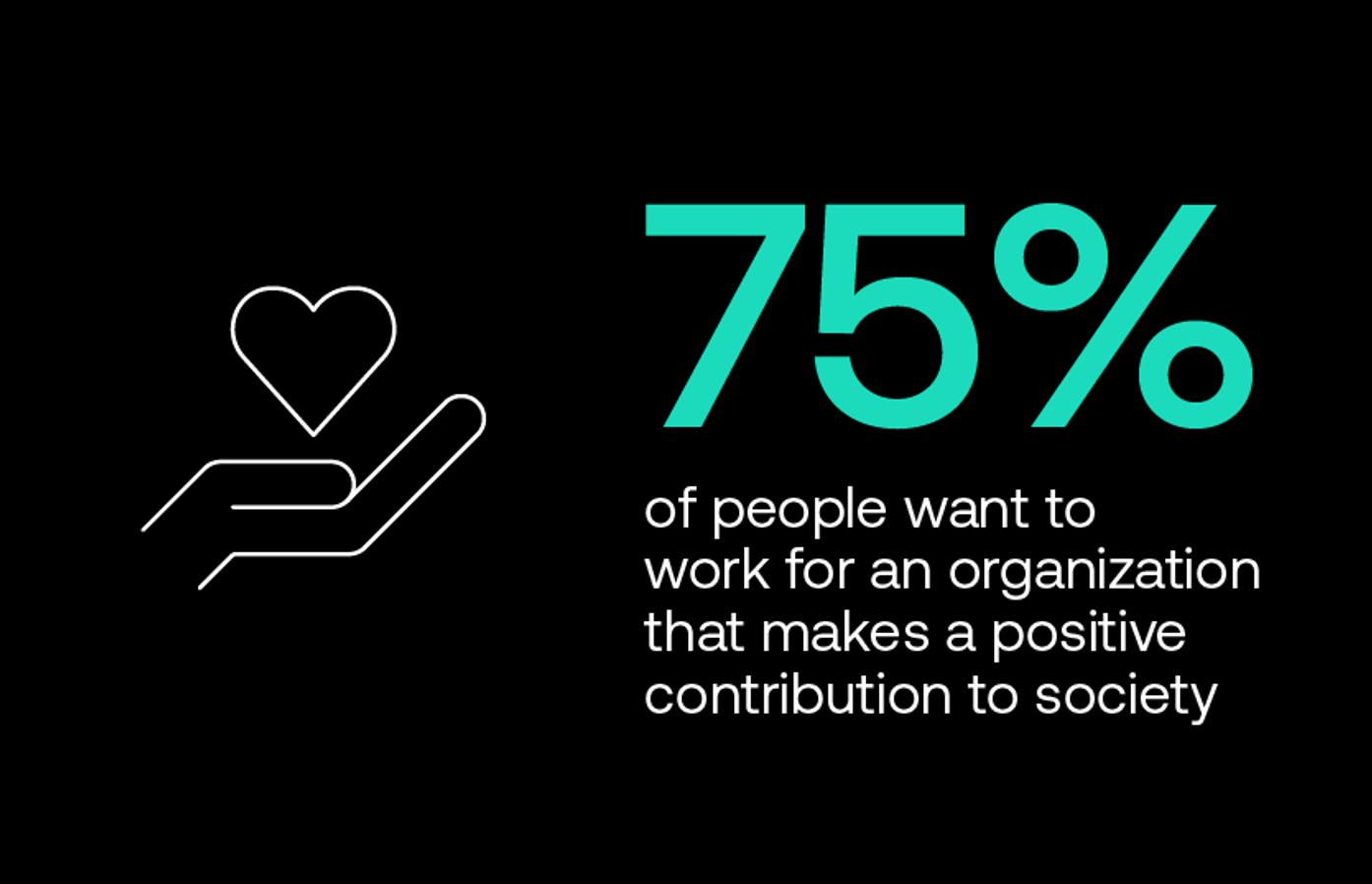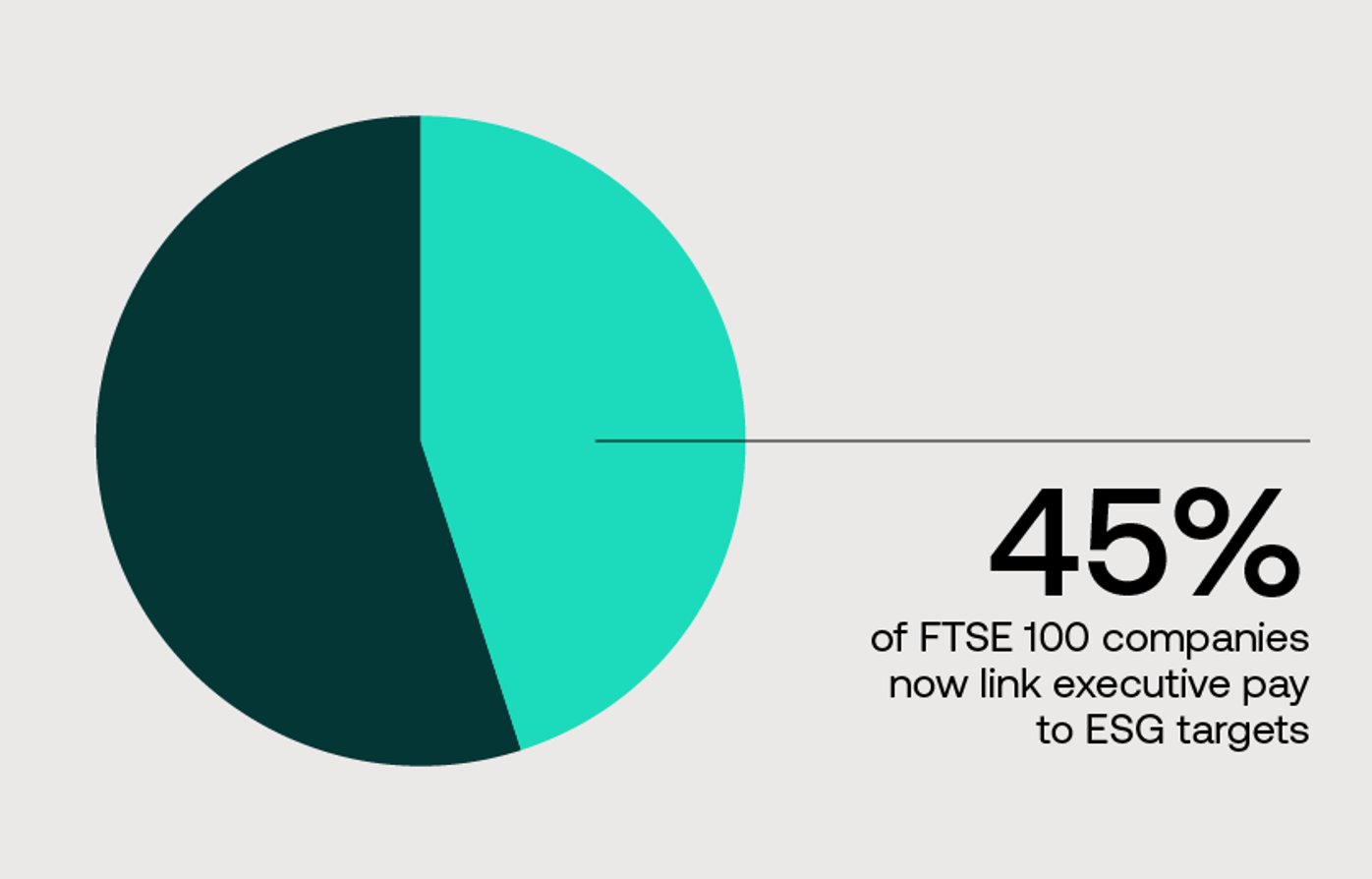ESG is the future of global mobility—and the past two years show the reasons why: COVID-19. Climate change. Social justice issues. Employee wellbeing. All these issues and more mean businesses should take steps to embed ESG (environmental, social, governance) into their policies and processes.
That includes global mobility, because everything in the mobility ecosystem touches an area of impact, and ESG criteria serve as a critical way to focus and measure that impact. Indeed, in November of 2021, the COP26 summit uncovered that government action alone isn’t enough to create the change needed. Businesses and organizations need to drive ESG targets and be held accountable to them.
Why is ESG more important than ever before?
Today’s employees place an increasing focus on working for purpose-driven companies. In fact, 75% of people want to work for an organization that makes a positive contribution to society. That’s one big reason to put a robust ESG policy in place. But that’s not all: ESG programs aim to benefit all a business’s stakeholders—clients, investors, suppliers, employees, and the communities in which the business operates.
By generating ESG goals and claims, companies can generate value and attract future talent. That’s because embedding ESG into the DNA of business and global mobility strategies leads to more sustainable markets, improved governance, and a meaningful, positive impact on society.

What does ESG have to do with global mobility employees?
Again, more and more employees want to work for companies whose values align with their own. But beyond that, employees can also help drive ESG strategies through remuneration and behavior changes; from reducing non-essential air travel to enabling flexible work options, there are numerous opportunities to capitalize on ESG objectives.
When employees are empowered to make sustainable decisions, it helps businesses achieve more of their sustainable development goals. In fact, 45% of FTSE 100 companies now link executive pay to ESG targets. Thinking of ESG from both the individual and the enterprise level enables the business to work toward even more impactful, loftier ambitions.

How have ESG and COVID-19 changed policy and initiatives?
The pandemic created a new paradigm for business travel, mobility and even onsite work. Organizations that use business travel found themselves refocusing their policy reviews to allow mobile employees to make choices to satisfy ESG propositions. These choices are more sustainable, such as promoting local recycling and limiting company car programs to electric only.
What’s more, flexible work options are becoming commonplace, and many organizations around the world are adapting their policies to fit. Allowing remote or hybrid working models aligns with ESG goals as it decreases commutes for workers, opens a wider talent pool, allows companies access to new territories and more. Choices like these give employees and businesses flexibility with purpose, allowing global mobility to help reinvigorate people, processes—and the planet.
How can supply chain and mobility vendors align on ESG targets?
Supply chain and mobility vendors are key to relocating employees and enabling business travel. So, it’s important for businesses to review their supply chain vendors and processes to make sure ESG policies are incorporated through the entire lifecycle of global mobility and business travel.
During this supply chain evaluation, companies should seek out vendors that already operate sustainably, with like-minded goals for the future. When companies and vendors create a collaborative process, they can align on common ESG objectives. If one link in the chain is broken, it weakens the entire ESG ambition. That’s why it’s critical to find shared ESG solutions that maximize benefits for everyone involved.
Can data and technology make a difference in ESG issues?
Technology is enabling modern businesses to innovate and inform the future of ESG. Through data and technology, for example, businesses can unlock a better understanding of issues like carbon footprint, gender and pay inequity by region and role, and privacy. Organizations can use the findings to identify opportunities, empower policy review, and prioritize employee needs. Insights like these can inform a business’s ability to move the right people at the right time and at the right costs to benefit the business and society.
The Vialto Partners perspective
We believe mobility should be:
- Fairer and more inclusive
- More purposeful and agile
- Cost-effective
- Sustainable and responsible
We work every day with clients to implement ESG strategies into their global mobility programs and processes. By empowering clients to see the bigger picture of people, planet and profits, we make it easier for businesses to understand how they can move global talent in the most sustainable and responsible way—and become a force for good in the process.
Let's connect
Please reach out if you’d like to learn more about Vialto.